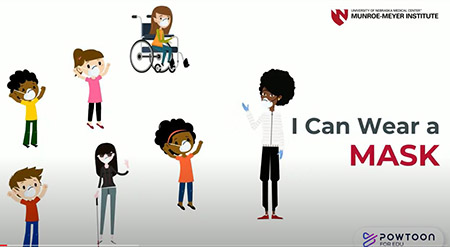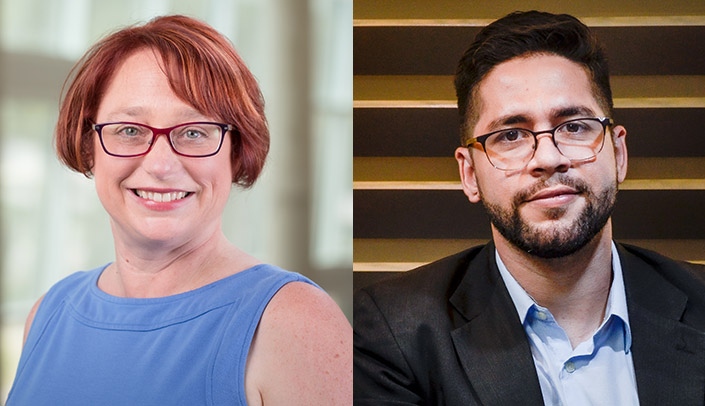Wear a mask.
Wash your hands.
Remain physically distant.
These and other COVID-19 safety tips were the focus of a six-part video series created by a team from the Munroe-Meyer Institute Department of Psychology to help area educators, with whom they were consulting, to teach COVID-19 safety skills to students with intellectual and developmental disabilities.
 |
“In August, when schools were coming back into session, we were wondering how students with intellectual and developmental disabilities would do with learning some of the preventative skills for avoiding spread of COVID-19,” Brenda Bassingthwaite, PhD, said “We wanted an instructional strategy to support educators as they taught the skills.”
Adriano Barboza, PhD, a psychology fellow at MMI, has experience in building video models. He and Dr. Bassingthwaite assembled a team to create video models around six specific skills that were going to be expected of some of the students in their classrooms.
“These videos came from a lot of hands,” Dr. Barboza said. “A lot of people made contributions, either recording voiceovers, helping with the scripts – we did a lot of preparation before putting them together.”
To select the six subjects — mask wearing, hand washing, physical distancing, using hand sanitizer, covering coughs and sneezes and checking temperatures — the team drew from recommendations from the Centers for Disease Control and Prevention as well as the guidelines being put in place by the schools.
“As schools were starting to bring students back, we knew that they were going to be practicing physical distancing, that students were going to be required to wear a mask, that they were going to increase handwashing and hand sanitizing,” Dr. Bassingthwaite said. “That was the school’s approach, so we wanted to have a complementary set of videos, knowing that some of the students we work with wouldn’t independently demonstrate all of those skills.”
The key, Dr. Barboza said, was keeping the videos informative and brief.
“We wanted to make the videos as direct as possible and as short as possible,” he said. “There is a wide range of people who can learn in different ways, and we had a lot of conversations about the ideal way to reach out to them.”
Although the free videos were designed with educators in mind, caregivers or others who work with individuals struggling with these skills can use them, Dr. Bassingthwaite said.
The videos also feature a diverse set of animated characters, a priority for the team.
“Diversity was paramount,” Dr. Bassingthwaite said. “Not only to have racial diversity — knowing that our target audience was people with intellectual and developmental disabilities, we wanted to make sure that people with disabilities were represented throughout the videos. We wanted to have a variety of people represented.”
The videos also are available in Spanish, and Dr. Barboza, who is from Brazil, translated Portuguese versions as well.
“My country also has been dealing with several challenges in this pandemic, so this was a good opportunity to give something back to my Brazilian colleagues. We also reached out for help to translate these videos to Spanish, since it is commonly spoken in the area. We wanted to benefit as many people as possible,” he said.
Using a screening tool, educators can track the effectiveness of each video. A post-use survey also is available as a feedback tool, so existing materials can be improved upon, Dr. Barboza said.
Right now, there are no plans for more videos, although the team is ready to help if needed.
“We are open to making more videos if the people using them have new ideas or areas that would be helpful,” Dr. Bassingthwaite said. “But there are no specific plans right now to expand to other translations or other skills.”
